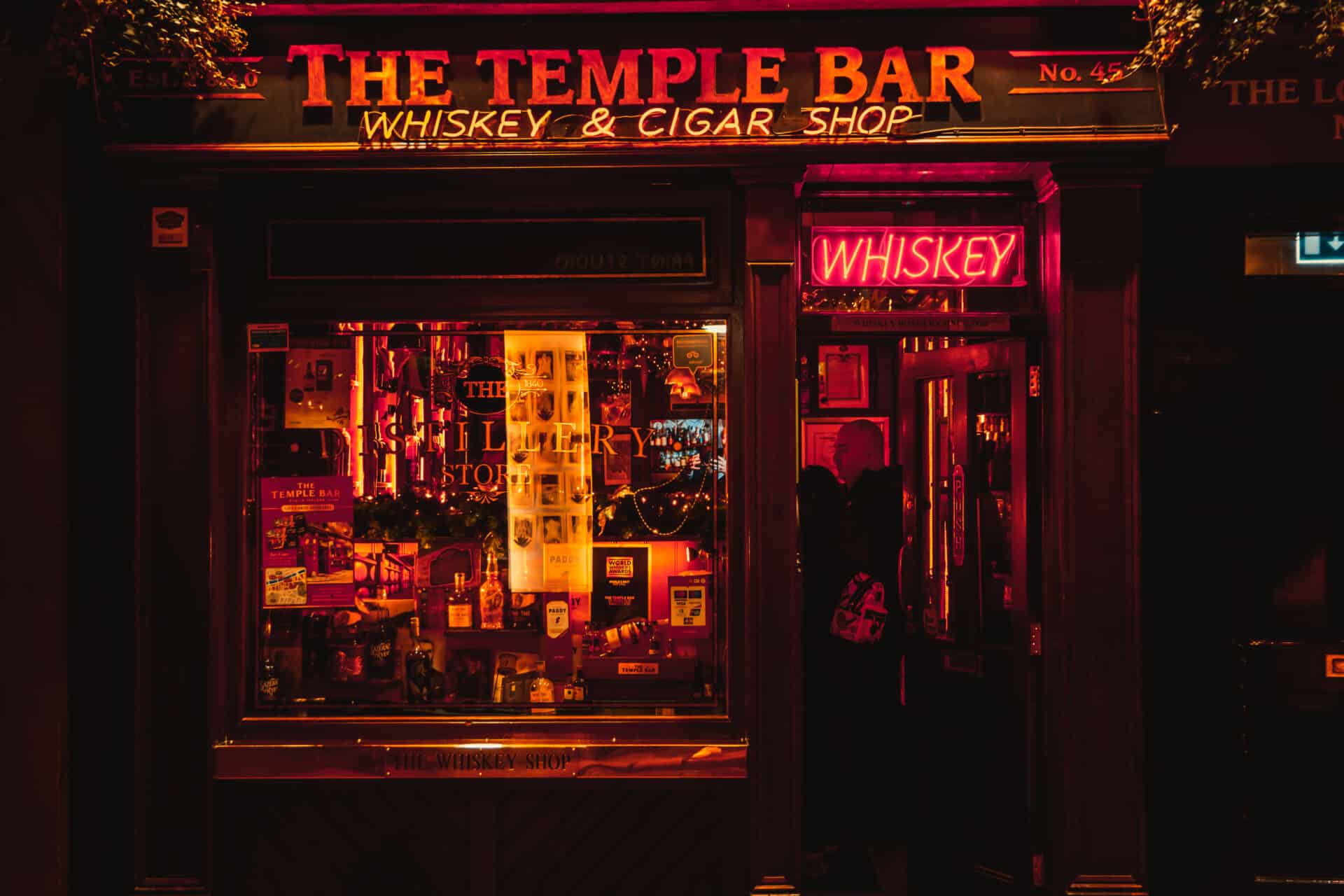Alcohol distillation is a process used to separate alcohol from a liquid containing other substances, such as water or other liquids. This process is used to create alcoholic beverages like whiskey, vodka, rum, and gin. Distillation works by using heat to vaporize the alcohol present in a liquid solution and then collect the vapor and condense it back into liquid form. By doing this, the alcohol can be separated from the other materials present in the original solution. In this article, we will discuss how alcohol distillation works and why it is used.Alcohol Distillation is the process of separating a liquid mixture into different components by heating it to the point that some of the ingredients turn into vapor and are then condensed back into liquid form. This process is used to create alcoholic beverages such as whiskey, vodka, gin, and brandy. The alcohol content in the resulting drink is often much higher than that of the original mixture due to the concentration of alcohol during distillation.
What is the Distillation Process?
Distillation is a process used to purify liquids or separate mixtures of liquids into their individual components. It involves heating a liquid to its boiling point and collecting the vapors that are produced. These vapors are then cooled and condensed back into liquid form, removing any unwanted impurities from the mixture. The process has been used for centuries to produce alcoholic beverages, essential oils, and other products. In addition, distillation is used in industries such as pharmaceuticals, oil refining, and petrochemicals for purifying liquids or separating mixtures of liquids.
The basic principle of distillation is that different components of liquids have different boiling points. When heated, these components will vaporize at their respective boiling points and can be collected separately. This allows the desired components to be isolated from any unwanted impurities in the mixture. To begin the distillation process, a heat source such as a stove or furnace is used to heat up the liquid mixture until it reaches its boiling point. As it boils, vapors are produced which are then collected in a cooling device such as a condenser or cooling tower where they are cooled
Alcohol Distillation
Alcohol distillation is the process of separating a liquid mixture into its various components. It is used to create different types of alcoholic beverages, such as whisky, gin, and vodka. The process involves heating the mixture to a point where the alcohol’s boiling point is lower than that of the other components. This allows for the alcohol vapors to be collected and condensed back into liquid form. The alcohol vapors are then collected and condensed back into a separate container.
The first step in distillation is to heat the liquid mixture until it reaches its boiling point. This will cause some of the components in the mixture to become vaporized. The vaporized components are then pushed through a cylindrical device called a still, which separates them based on their boiling points. The lower-boiling components will travel up through one side of the still, while higher-boiling components will travel up through the other side.
The alcohol vapors then travel up through a cooling coil, where they are cooled down and condense back into liquid form. This liquid is then collected in a separate container, leaving behind any remaining solids or other
Types of Alcohol Distillation
Alcohol distillation is a process used to separate the components of a liquid mixture by heating it to evaporate and then condensing the vapor. This method can be used to produce a range of alcoholic beverages, from whiskey and vodka to beer and wine. There are several types of alcohol distillation, each with its own unique characteristics and benefits. The most common types include:
Malt Whiskey Distillation: Malt whiskey distillation is the process used to create Scotch whisky, an iconic Scottish spirit made from malted barley. The process involves fermenting malted barley in water, followed by heating it in copper stills. The resulting liquid contains various alcohols, which are separated by temperature as they travel along the still and condensed back into a liquid form.
Pot Still Distillation: Pot still distillation is the traditional method used for making whiskey, gin and brandy. It involves heating a fermented mash of grains or fruits in a large pot still, which allows the alcohols within the mixture to evaporate at different temperatures. The vapor is then collected in individual containers where it can be distilled further to
The Basics of Alcohol Distillation
Alcohol distillation is the process of separating alcohol from other components in a liquid mixture. It is used to produce alcoholic beverages such as whiskey, rum, and vodka. The process involves boiling the liquid mixture to separate the alcohol from other compounds. The alcohol vapor is then condensed and collected in a separate container. Distillation can also be used to purify water or other liquids by removing impurities from the mixture.
The process of distillation begins with a liquid mixture of water, ethanol (alcohol), and other volatile compounds. The mixture is heated until it boils, which creates steam that rises to the top of the container and carries with it the volatile compounds. As the steam reaches the top, it condenses into a liquid form and is collected in a separate container. This process removes most of the impurities from the original mixture and leaves behind a clear, concentrated alcohol solution called “distillate”.
Distillates can then be further processed to remove any remaining impurities or to adjust their flavor profile. For example, whiskey is typically aged in oak barrels for several years before being bottled for sale. This aging helps to create a

Step 1: Ensure the Fermentation Process is Complete
The first step in alcohol distillation is to ensure that the fermentation process is complete. This means checking that all of the sugars in the mixture have been converted into alcohol. To do this, a hydrometer can be used to measure the specific gravity of the mixture, as this will give an indication as to how much sugar has been converted into alcohol. If the specific gravity reading is lower than expected, then more time should be allowed for fermentation to continue.
Step 2: Heat the Mixture
Once fermentation has been completed, it’s time to heat the mixture in order to begin distillation. The mixture should be heated slowly and evenly, and care must be taken not to heat it too quickly or too much as this can lead to off flavors and aromas in the final product. The temperature of the mixture should be monitored throughout the process, as different temperatures will result in different levels of evaporation.
Step 3: Separate Alcohol from Water
As the
Equipment Used for Alcohol Distillation
Alcohol distillation is the process of separating a mixture of ethanol and water into individual components. Distillation is typically used to increase the concentration of alcohol in a beverage or to produce an alcoholic beverage from fermented grains, fruits, or vegetables. The equipment used for this process includes a still, condenser, and receiver.
A still is the most important piece of equipment used for alcohol distillation. It is essentially a large heated container that holds the mixture of ethanol and water. The heat from the still causes the ethanol to evaporate, leaving behind the heavier water molecules. This vaporized ethanol then passes through a condenser, which cools it down and turns it back into a liquid state.
The condenser is also an important part of the distillation process because it helps to separate out any impurities that may be present in the mixture. After passing through the condenser, the now-pure alcohol moves into a receiving vessel where it can be collected and stored. This vessel may be made out of glass or stainless steel and should be tightly sealed to prevent any evaporation or contamination from occurring.
In addition to
The Benefits of Alcohol Distillation
Alcohol distillation is a process that has been used for centuries to create different types of alcohols. The process involves heating and then cooling the liquid, which separates the components of the liquid and allows for the desired alcohol to be created. This process has numerous benefits that make it an ideal choice for creating different types of alcoholic beverages.
One of the main benefits of alcohol distillation is its ability to produce high quality, pure alcohol. The process ensures that all impurities are removed from the liquid, which results in a product that is safe to consume and contains all the desired properties of the chosen type of alcohol. This makes it ideal for creating high-quality alcoholic beverages such as vodka, gin, whiskey, and rum.
Another benefit of alcohol distillation is that it allows for alcoholic beverages to be created with specific flavor profiles. By controlling the temperature and other variables during distillation, it is possible to create unique flavors in an alcoholic beverage that cannot be achieved through other methods. This makes it possible to create unique drinks that appeal to different tastes and preferences.
Finally, alcohol dist

Conclusion
Alcohol distillation is a centuries-old process that is used to produce high-proof alcohol from fermented beverages. It is also important for producing essential oils and other products. The process involves boiling the liquid and collecting the resulting vapor, which carries the alcohol, and cooling it back into a liquid form. The resulting distilled spirits are much stronger than what was originally fermented. Alcohol distillation requires knowledge of the different types of stills available and understanding of how to adjust the variables involved in the process in order to produce a desired outcome. With proper care, attention and practice, one can become an expert in distilling alcoholic beverages.
Regardless of what type of still you use or what liquid you are distilling, it is important to remember that all distilled spirits contain ethyl alcohol and should be consumed responsibly. Distillation can be a fun and rewarding process but should always be done with caution.

